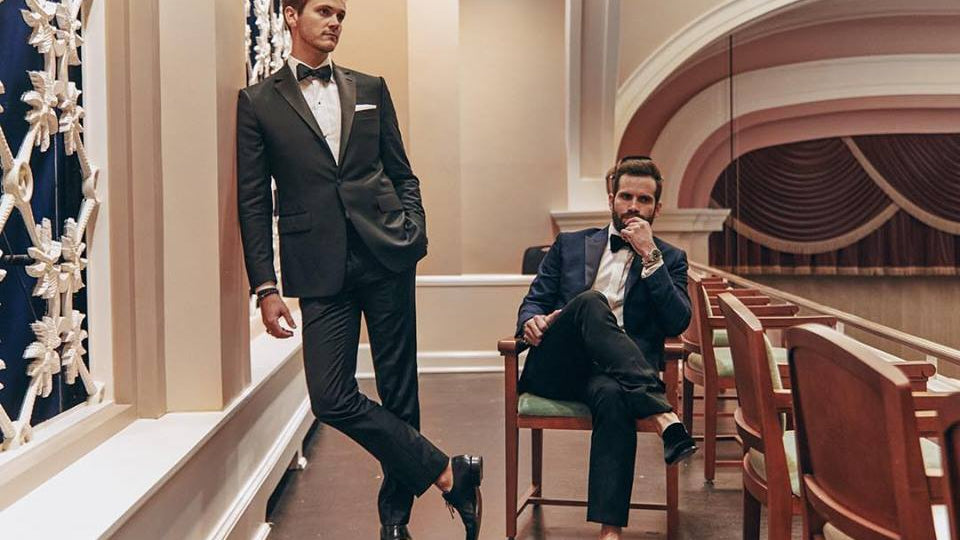As anyone who has spent time in Charleston in the Fall and Winter can attest, tuxedos have long been a staple of Western dress for everything from proms to weddings. Although assuming a prominent spot in many men’s wardrobes, most do not know the history of this special garment. Evolving from the “smoking jacket” of the 19th century, the tuxedo, or dinner jacket, was first introduced by the then Prince and later King of England, Edward VII with his tailless blue silk smoking jacket and matching trousers commissioned through renowned Savile Row tailors Henry Poole & Co. References to the semi-formal dress coat substitute first emerged in the United States in the Summer and Fall of 1866, with the most famous reference linked to the New York state countryside enclave for the Manhattan elite- Tuxedo Park, New York.

Deemed “black tie” in typical Western dress code, tuxedos are typically evening wear worn in black, midnight blue or white with a white dress shirt, black bow tie and waistcoat, cuff links, and black patent leather dress shoes. Early models were worn with 1, 2, or no buttons and a shawl collar faced in satin or silk. Peaked lapels became fashionable by the turn of the 20th century which is also when the single button became standard for the tuxedo. Notch lapels fluctuated in popularity until the 1980’s when they returned for good. Although formal etiquette champions like Emily Post would deem tuxedos too informal for weddings or social events earlier than 6 pm, contemporary dress differs greatly and allows for individuals a wide range of use for their tuxedos. Differences aside, they all agree on one thing- men should own their own tuxedos, never renting them.
With the Holiday season quickly approaching, stop by the #CornerofKingandSociety to order and get fitted for your tuxedo before it is too late!


